1982 – 2014 169 cm Bay
Breeder: Le Prince Amaury De Broglie
A recent post on the website, Hippomundo, has drawn attention to Quidam de Revel’s influence as a jumping sire:
“Quidam de Revel’s offspring have been exceptionally successful in the sport with 165 recorded descendants competing at 1.60m+ level. Thanks to his offspring, Quidam currently stands in fourth place in the Hippomundo Stallion ranking based on the average amount of prize money won by his offspring. Two of his descendants have surpassed the winning mark of two million euros. Both Sterrehof’s Calimero (Marc Houtzager) and Verdi TN (Maikel van der Vleuten) have won more than two million euros in their successful careers.”
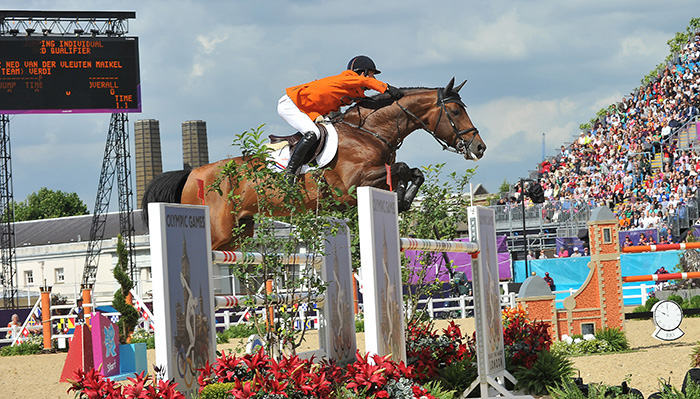
Verdi at the London Olympics
The article points out that on the top 100 Hippomondo ranking (based on total prizemoney earned) ten are by Quidam with four in the top ten. His successful sire sons included Nabab de Rêve, Tlaloc La Silla, Verdi, Quaprice de Bois Margot and Quinar Z. Grandsons – Vigo de Arsouilles, Kashmir van’t Schuttershof, Quintero Ask, FRH Quaid and Luidam.
Vigo de Arsouilles at the 2010 WEG
Quidam has been an influential sire for two decades. In 2004, he topped the World Breeding Championships Jumping Stallion ratings for the second year running, establishing himself as the pre-eminent – and most expensive – living sire of jumping horses. With ten (!) of his progeny jumping in Jerez 2002, he was the stallion with the most number of progeny at the WEG.
A decade later, Quidam was still a force at the London Olympic Games but more through his sons. Quidam had one representative, while his son Nabab de Reve had four, and his son, Kashmir van Schutterhof, one. Another Quidam son, Quasimodo Z had two, with singles to Vigo d’Asouilles, Guidam and Dollar da la Pierre.
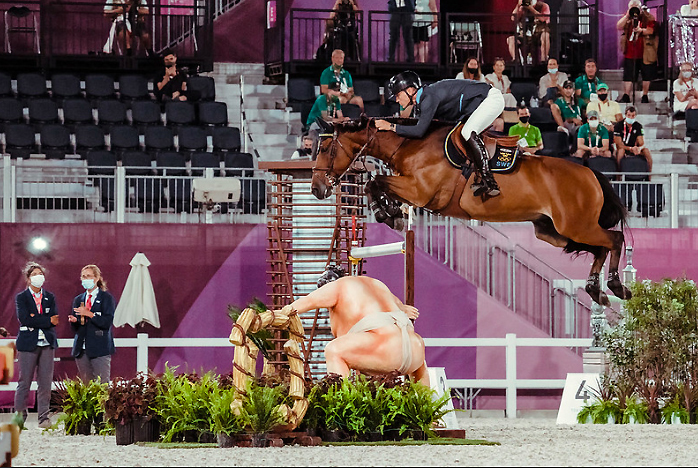
All in and Peder Fredricson
At Tokyo, he was represented through his grandson, Kashmir van’t Schuttershof who sired three competitors, including the star of the Games, All in.
Quidam de Revel at Barcelona
Quidam was himself a jumping star, a member of the French Olympic Team, and fourth individually at the Barcelona Olympic Games with Hervé Godignon. A year later the patriotic French breeders were shocked when Danish businessman, Flemming Velin purchased the stallion and he moved to stand in Denmark.
The Quidam story (excellently told by Marc Verrier in Annuaire Monneron 2005) begins in 1935, when the mare, Nadine (Issu d’Amblie / Sérieux) was sold by her breeder, Léon Brohier (uncle of Jean, the breeder of Narcos II and Quat’Sous) to the Clodus family, to draw their carriage.
Nadine – she started it all…
When Marguerite Clodus married Jacques Savary in 1950, she brought Nadine with her. Ridden by both husband and wife, Nadine also gave birth to four foals, including three fillies that were to become famous with the affix – de Baugy.
Ismène de Baugy
Bred to Ascot, Nadine produced Ismène de Baugy, a winner in 4-year-old classes before she went on to produce Quadrille C, another good competitor. Bred again to Ascot, Nadine foaled Jésabelle de Baugy, a winner at CSO level, but more famed for her foals: Troubadour, winner of the 6 year old Criterium, Commander and Daguet de Baugy – all three of them won CSIs.
Dollar de Murier and Eric Navet
Jésabelle also produced Uriel, an excellent sire whose daughters nicked especially well with Almé’s descendants – most notably Jalisco B. The most famous result of this cross being the stallion, Dollar de Murier.
Uriel may be considered with Ibrahim, one of the founding stallions of the Anglo Normand part of the SF Stud Book, and he was the sire of many great jumpers.
Nadine was then bred twice to the Thoroughbred, Harphortas. This stallion, principally used by Jacques Savary, was so neglected by breeders that Jean Brohier dubbed him – ‘Jacques Savary’s private stallion’. Nadine produced Ondine de Baugy, a ‘pretty but difficult’ mare, who bred to Nankin, produced five fillies, the most famous of which are Bérénice and Dirka.
Bérénice produced the showjumping winners, Gamin de Baugy and Nadir de Baugy, as well as the stallions, Cheyenne de Baugy (sold to Belgium) and the National Stud stallion, Veneur de Baugy. She also produced Lady de Baugy, dam of the jumper, Rodéo and the stallion, Sioux, a good performer who stood in Belgium before being purchased by the French National Stud.
Dirka – competitor and brood mare…
Dirka, who did not carry the de Baugy affix, was sold as a three-year-old to the Prince de Broglie. She performed well as a six year old (22nd of her generation) before being sent to Nelson Pessoa, who rode her to CSIO level, winning many speed classes. Later she was ridden by Xavier Leredde (son of the breeder, Fernand Leredde) and finished her competition career in his hands. She was retired from competition in 1979.
Bred to San-Souci, Dirka produced Orka de Revel and Paprika de Revel, both successful jumpers. Following the election of François Mitterand, the Prince fearing for his fate under a left-wing government, fled to Switzerland, leaving Dirka in the care of Fernand Leredde.
Young Xavier was starting a successful jumping career with Jalisco B – and the young stallion was a natural choice. In January 1982, Dirka gave birth to Quidam de Revel.
Bred to Jalisco, she produced the broodmares, Razzia and Sarah de Revel. With Jalisco’s half brother, Kissovo, she produced CSO winner, Vallon Rouge, and with Narcos, Aiglon Rouge, a star in Holland. With Quat’sous, she produced Byra Rouge, and with Papillon Rouge, Dirka de Revel. What a mare!
Quidam was sold at the age of 18 months to Mr Barbier, who then sold the colt to the Mazé family, and their daughter Sophie was the first to experience the emerging superstar.
At the end of Quidam’s six-year-old season, Sophie Mazé offered the ride to Hervé Godignon. The combination was an immediate success, winning the European Championships at La Baule in 1991, and missing a bronze medal by the narrowest of margins at the 1992 Olympics in Barcelona.
In June 1993, he was purchased by the Dane, Thomas Velin.
In an article in HORSE INTERNATIONAL (No 1 – 2003), Velin told the journalist, Pernille Linder Velander: “I am a Thoroughbred person. Quidam is the kind of horse that appeals to me. He is a perfect beauty. If you compare him to the legendary Northern Dancer, you could hardly tell who is who. They could be twins.”
But Mr Velin got more than a breeding stallion, he purchased the ultimate ‘school-master’ for his son, Thomas, taking him on to win such prestigious events as the Grand Prix of Hannover.
According to Thomas: “The feeling I got from Quidam has taught me what it should feel like to sit on a really good horse. If you have not had that experience, you simply cannot imagine what it can be like. When in the air, if needed, Quidam could just… like put in another gear, make another effort and jump higher still even after taking off from the ground.”
Quidam de Revel unites two of the most important lines of the Selle Français horse – the lines of Jalisco and Uriel. The Nankin son, Uriel was one of the most successful French stallions, producing more than 100 international showjumpers, which gave him a jumping index of 121, the highest recorded in France at the time. Uriel was the sire of 26 stallion sons – including Calvados who was influential in Holland, standing at the Nijhof stud.
Jalisco is a legend in his own right, but Quidam’s dam was also a star – Dirka, despite being only 163 cms, won at international level with Nelson Pessoa, before being given to Xavier Leredde who made his junior international debut on her.
Verdi, a member of the Gold Medal winning Dutch team at Normandy…
Performers by Quidam de Revel include: Goldy, Guidam, Circa Z, Tlalloc La Silla, Nabab de Rêve, Dollars Boy, Hermès St Lois, Happy Villers, Jadis de Toscane, Belsedène d’Amaury, Bamby II, Baie Mahault, Coucou des Vivreau, Demie-Lune, Darios V, Furka du Village, Huppydam des Horts, Eve des Étisses, Daibolo du Parc, Dolovia de Sapaie, Drakkar de Phaële, Diam de la Ressée, Daibolo du Parc, Étoupe, Bianca d’Amaury, Eyken des Fontenis, Electra d’Amaury, Éburovic Granpré, Coco Chanel Trèfle, Billy de Forcilles, Happy Villers.
In the survey of the world’s top 75 jumping sires that appears in the French publication, Monneron 2007-2008, Quidam de Revel was Number 1 with 48 CSI winners and he was also represented by two sons. Nabab de Rêve (out of an Artichaut mare) is 18th with 14 CSI winners, while Guidam (out of a Vénutard mare) ranks 19th with 12 winners, including Authentic, second best performer in the world in 2006 and winner of the Grand Prix of Aachen in 2007.
In the article Three historic champions in Breeding News (October 2017), French breeder and journalist, Bernard le Courtois told Adriana van Tilburg, that he thought Quidam was at least partly responsible for the ‘French mouth’ rumour:
“I think that the rumour about the SF mouth came from Quidam de Revel, who did have a strong mouth because his balance was bad. Although that’s true, he became one of the most influential stallions din the world. Dutch and German horse dealers and riders seemed to take the opportunity of Quidam’s visibly difficult mouth to spread the rumour that all French horses are the same. But it was only a commercial rumour.”
As a sign of the times, Quidam de Revel was listed in the 2015 Hanoverian Stallion Yearbook, where he is recorded as having 402 competitors with winnings of €1,898,770 with 138 competing at S level. He has 27 horses with over €15,000 in prizemoney. Four horses have won more than €100,000: Queen Liesa with €182,186, Quel Homme 3 with €138,744, Quibell with 123,829 and Diablo du Parc with €103,493. Queen Liesa (Holstein branded, and out of a Cor de la Bryère mare) was a solid performer with Felix and Toni Hassmann, but no super star. Her best result in her final year of competition, 2009, was a 1st in a 1.45 class at Bremen.
Quidam is not listed in the 2021 book, but he is represented by grandsons Quaid (Quidam’s Rubin) and Quality (Quinar) and a great-grandson, Qualito (Quaid) but the most influential Quidam representative in the Hanoverian book, has been the Quidam son, Quidam’s Rubin (Landgraf / Caletto I) whose career was tragically cut short when he died at the age of 14 but not before he sired 663 jumpers who have won €2,235,902.
For 2014, Quidam has an FN jumping breeding value of 139. His dressage ranking is 85. On the Hanoverian mare test scores, he has a negative 79 for type, and even a negative 95for limbs. On the Hanoverian values based on mare tests and auction examinations, he has a 79 for dressage and 143 for jumping.
On the WBFSH stallion rankings for 2014, Quidam de Revel was in 10th with by far his most successful representative, Verdi. On the 2020 standings, Quidam is in 14th with points earned by 36 of his progeny.
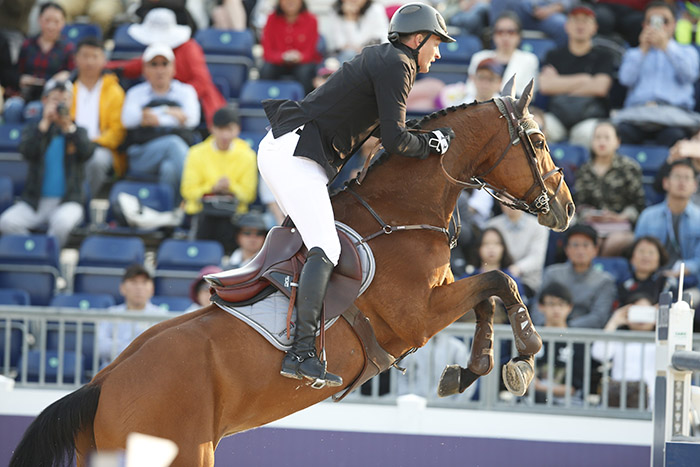
Sterrehof’s Calimero and Marc Houtzager (photo Stefano Grosso)
In the magazine le Selle Français (no 16 – 1st Trimestre 2013), Bernard le Courtois looked at the top 15 stallions of the 2012 season and Quidam was top of the list, with 8 winners in the season – equal with Kannan. However, he ranked 7th on the list of stallions ranked by the number of winners to number of progeny – with 8 out of 425 foals born between 1999 – 2003, a ratio of 1.88%.
The clone of Quidam, Paris-Texas was born in 2005 and was registered in the Studbook Zangerheide. Interestingly, the Quidam clone stood for a while at Joris Brabander’s Stal de Muze but the great breeder wasn’t hugely enthusiastic about using him.
I remarked to Joris, you obviously don’t have a problem with clones?
“I don’t have problems, but I have found we really don’t need that – sometimes there are a few exceptions, like I use a lot the clone of Gem Twist, he was a gelding and a Thoroughbred. I have the clone of Quidam de Revel at my home, we use him a little bit, but I think this is ridiculous when you have a stallion that bred already three thousand foals, you don’t have to clone him and try and write the same story again, that’s worthless. You have to give chances to other bloodlines, young stallions, not try and do all the time the same things. What Léon Melchior is doing, cloning his good stallions, I don’t think that is a good idea. It exists now, and there are a few good clones so you can use them, but without the clones, breeding is also possible, I think.”
The clone is no longer standing at Stal de Muze and has disappeared into Poland.
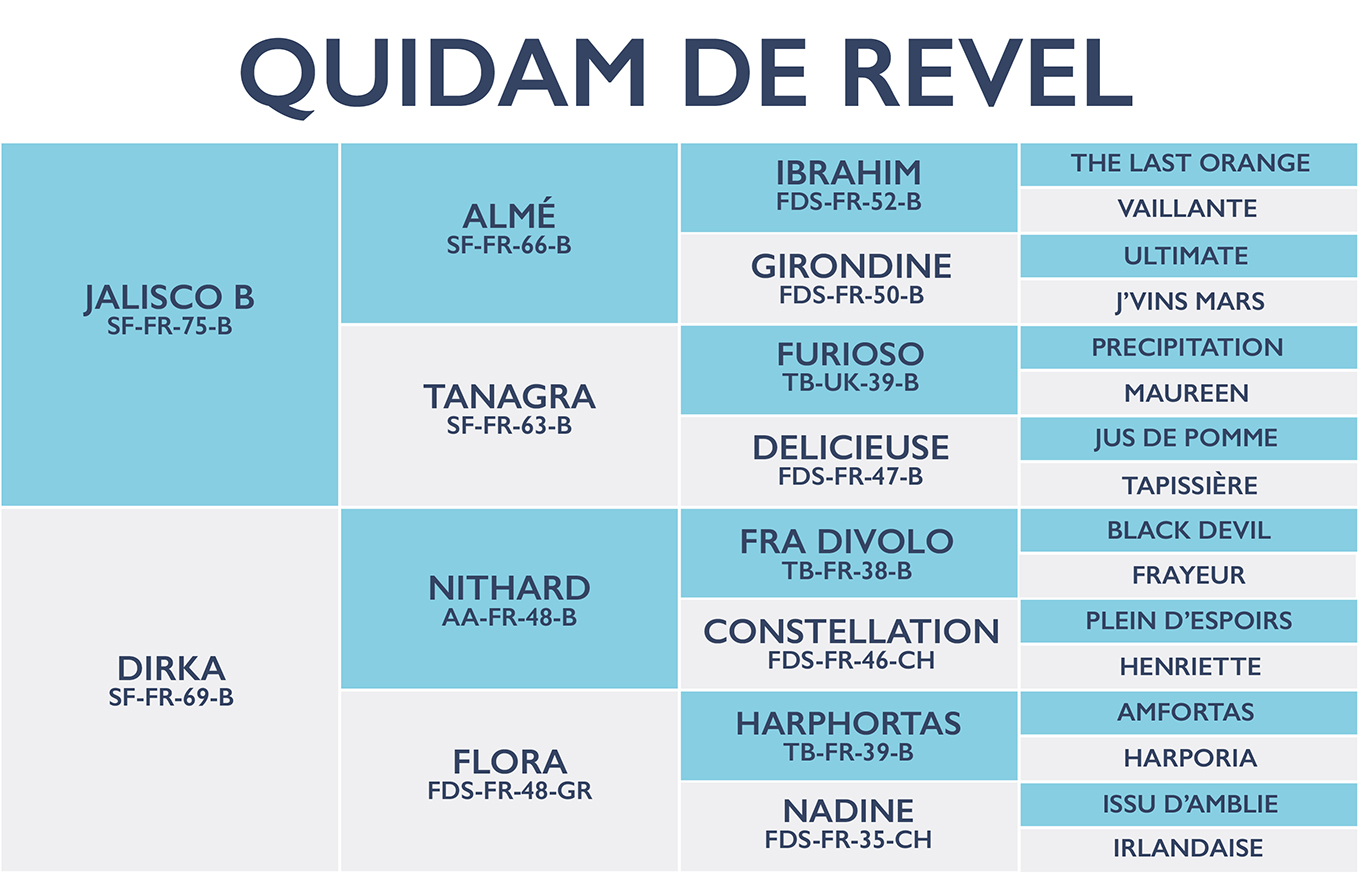


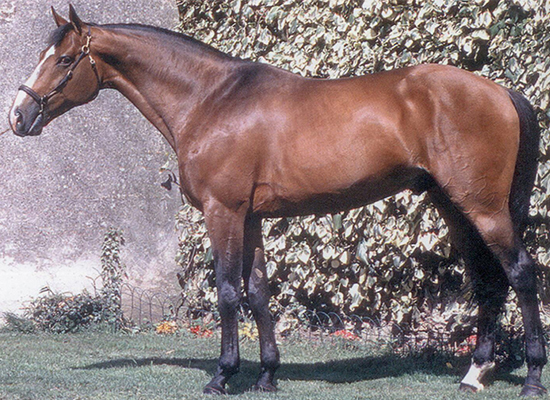
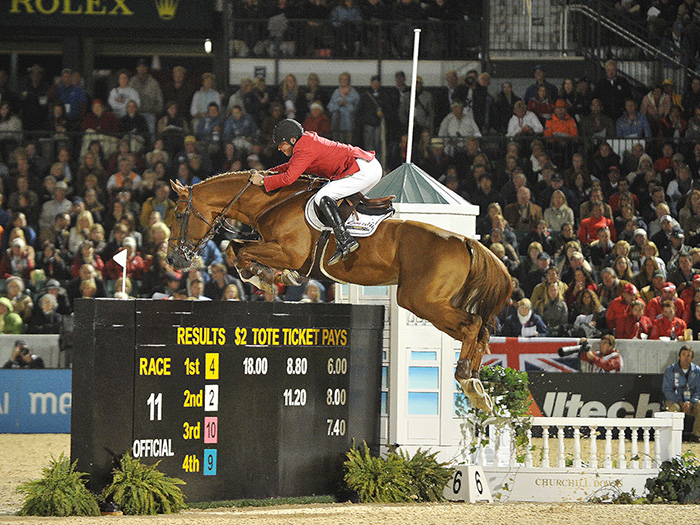
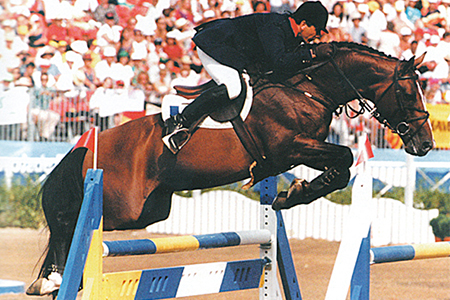
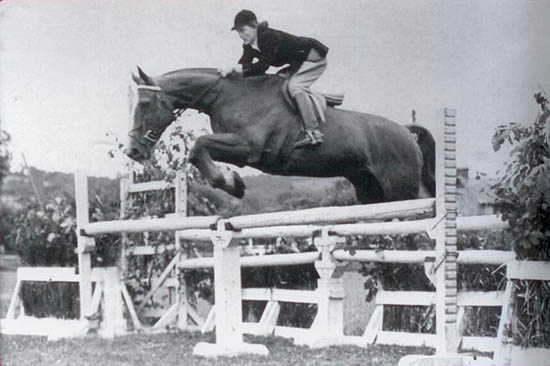
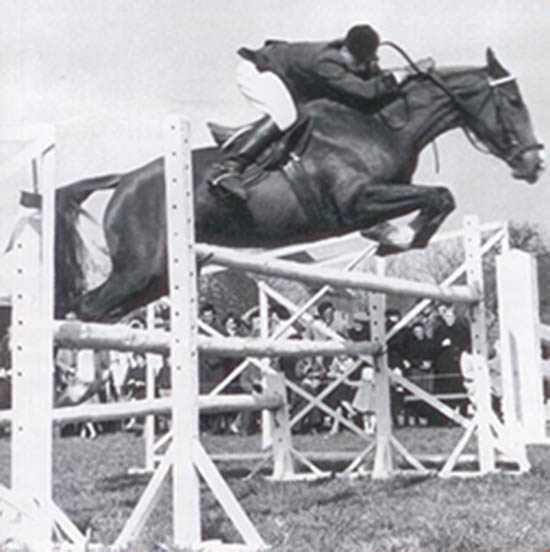
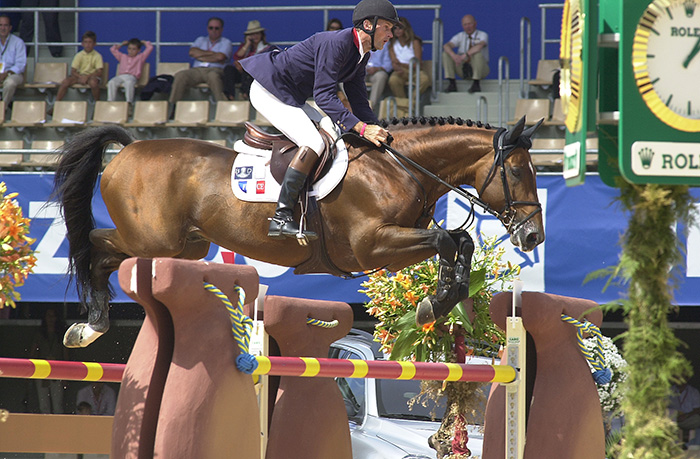
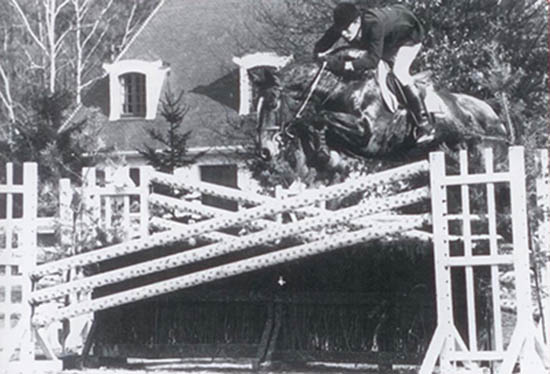
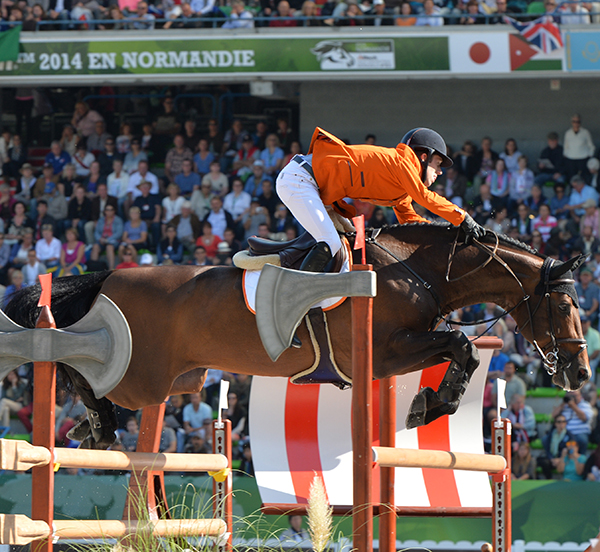
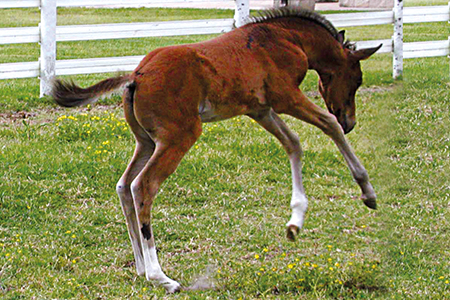
One thought on “Quidam de Revel”
Comments are closed.